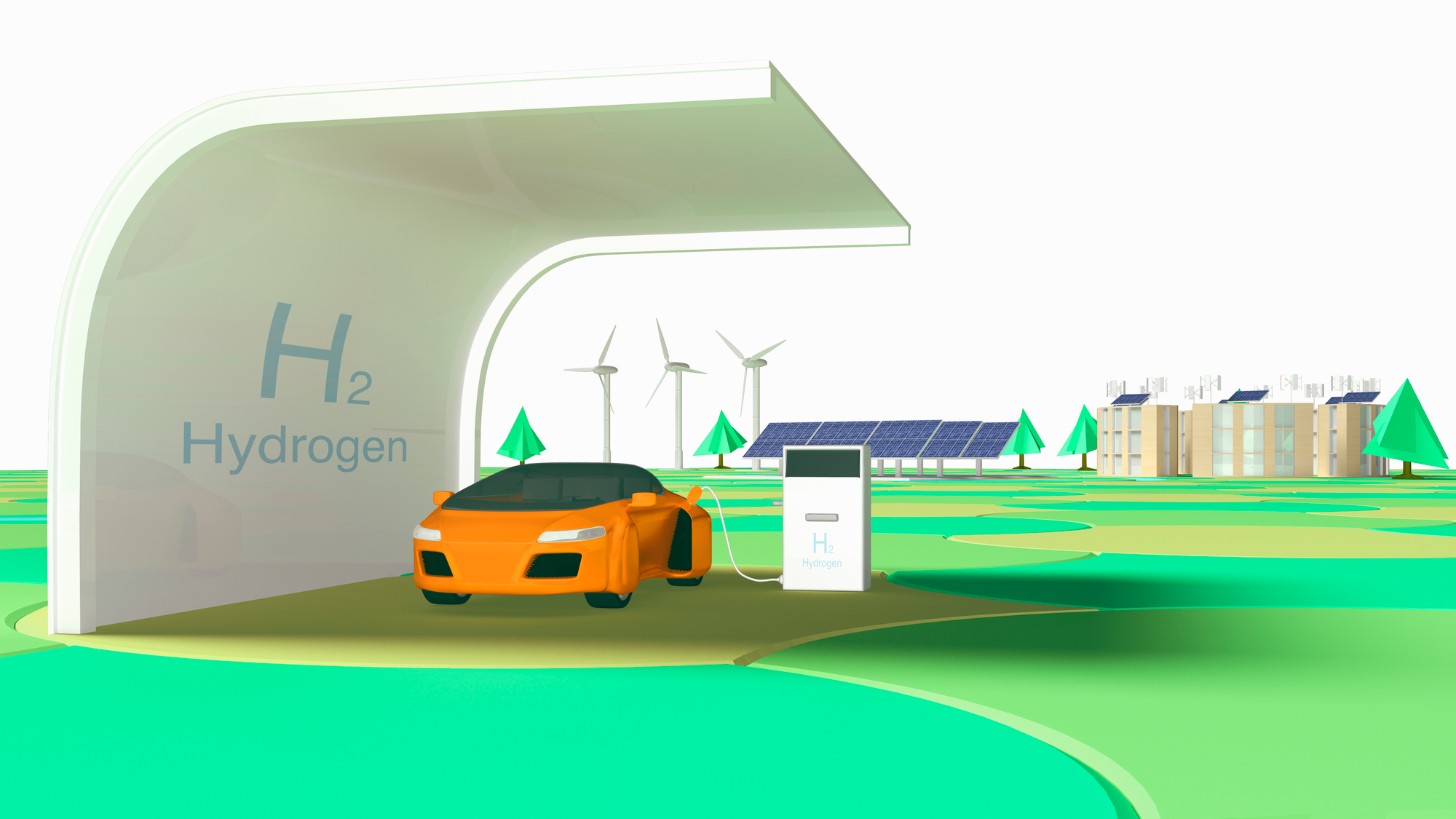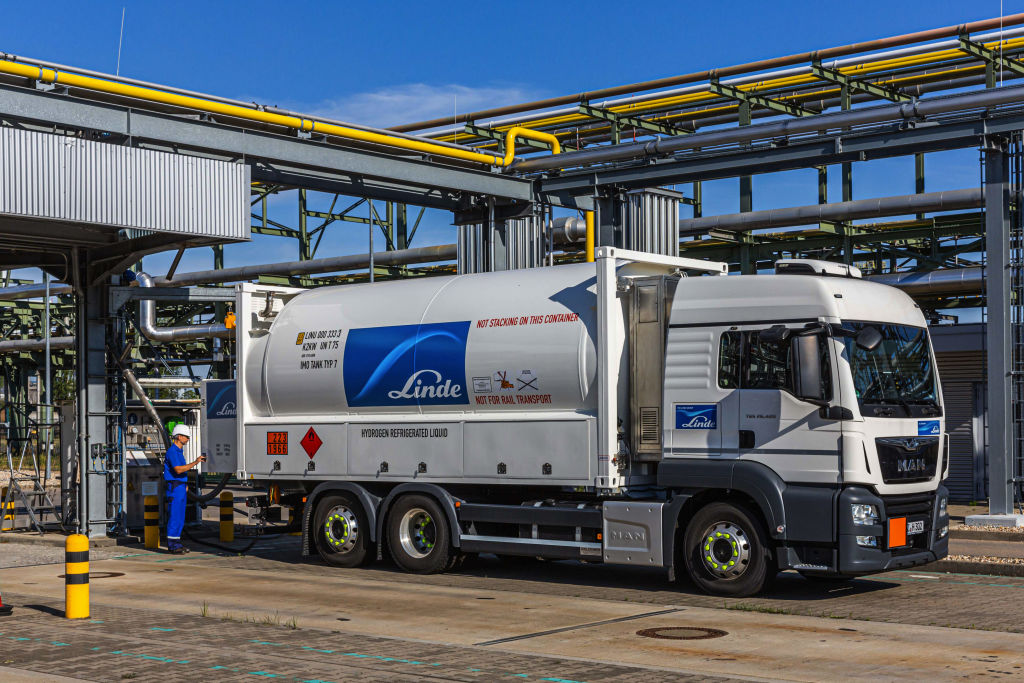
Auto driving Hydrogen Energy Car Station model. /Getty
Auto driving Hydrogen Energy Car Station model. /Getty
Editor's note: Djoomart Otorbaev is the former prime minister of the Kyrgyz Republic, a distinguished professor of the Belt and Road School of Beijing Normal University, and a member of Nizami Ganjavi International Center. This is the second piece of his series on hydrogen as the future energy. The article reflects the author's views, and not necessarily those of CGTN.
My previous piece described the almost limitless potential of hydrogen as a sustainable energy source of the future. In the new economy, hydrogen will replace fossil fuels, which currently provide four-fifths of the world's energy supply and emit the dominant share of greenhouse gases. However, to achieve this goal, green hydrogen will have to be produced at prices comparable to the cost of conventional energy carriers. In this regard, the current piece will focus on quantifying hydrogen production costs, including examining the limits imposed by governments on carbon emissions.
Among the unique characteristics of hydrogen as a source of energy are its availability, high energy density, and environmental friendliness. It is the most abundant chemical element in the universe; a kilogram of hydrogen has an energy density almost three times that of gasoline and more than twice that of gas. And no carbon-containing substances are emitted during its production and use.
Since hydrogen molecules are the smallest and lightest, the energy content of hydrogen per volume unit is approximately one-third of natural gas. However, condensed hydrogen contains almost 2.5 times more energy per kilogram than natural gas. The record energy density per kg is its unique advantage in the field of mobility. For example, hydrogen has about 200 times the energy density compared to conventional lithium-ion batteries. The energy density of hydrogen is at least 100 times higher than the best modern batteries.
Building on this momentum, the most advanced countries are pursuing more and more tangible policies to promote hydrogen as the best fuel for the future. To date, the governments of 18 countries, accounting for 70 percent of global GDP, have developed detailed strategies for implementing hydrogen energy solutions.
But the most fundamental breakthrough in the development of hydrogen energy is associated with environmental protection and climate change requirements. There is a consensus among governments that hydrogen can radically decarbonize those sectors of the economy that would otherwise be impossible or difficult to eliminate. These include logistics, petrochemicals, industrial heating, and the production of raw materials.
The increased focus on hydrogen production has been recently associated with vital technical improvements, dramatically reducing its manufacturing costs. For example, the efficiency of electrolysis, which is the primary method for producing green hydrogen, has recently become at least 60 percent cheaper. As both low carbon and renewable electricity prices and electrolysis capital costs fell.

The Linde AG logo sits on a liquid hydrogen tanker truck taking a fuel delivery at the Linde hydrogen plant in Leuna, Germany, July 14, 2020. /Getty
The Linde AG logo sits on a liquid hydrogen tanker truck taking a fuel delivery at the Linde hydrogen plant in Leuna, Germany, July 14, 2020. /Getty
The cost of solar and wind energy, which is the primary driver of reducing the cost of producing hydrogen from renewable sources, has declined by 80 percent over the past decade. By 2025, their capacity is expected to be at least 55 times more than in 2015, which will lead to a sharp reduction in the cost of investments in electrolysis technology.
By 2030, according to various estimates, the cost of producing renewable hydrogen (blue hydrogen) may reach $1.6 per kg, and the cost of producing green hydrogen, $2.3 per kg. Even at this cost and without any restrictions on carbon dioxide emissions, hydrogen will become competitive, for example, in heavy road vehicles. Experts calculated that hydrogen would be profitable for use in buses already at $4.4-4.6 per kg, in trains at $3.8 per kg, in trucks at $2.2 - 3.0 per kg, and in SUVs at $2.2 per kg. However, to achieve profitability in passenger cars, the cost should be lower $0.6 per kg. If the authorities introduce a special tax on carbon-containing gases, the situation will dramatically improve.
The introduction of an additional $100 per ton of CO2-equivalent payments will push other industries to break even as well. The use of hydrogen in passenger cars, steel production, ammonia, and oil refining will become break-even. Building heating, power generation, and other modes of transport, such as shipping or aviation, will only be able to pay for themselves if the carbon costs are higher.
The idea of using hydrogen as an environmentally optimal energy carrier has been discussed for decades. However, only in our time, the past views are being transformed into tangible actions. Recent advances in the development of solar and wind photovoltaic cells, batteries, and electric vehicles have shown that scientific and technological innovation has the potential to create global clean energy industries. With the growing role of the energy sector, the versatility of hydrogen is gaining increasing interest from both governments and the private sector. These include renewable energy suppliers, industrial gas producers, electricity and gas companies, car manufacturers, oil and gas companies, engineering firms, and smart cities.
Large-scale investments in hydrogen energy will drive new technologies and industries worldwide for many years to come, creating skilled jobs and improving people's lives.
(If you want to contribute and have specific expertise, please contact us at opinions@cgtn.com.)

